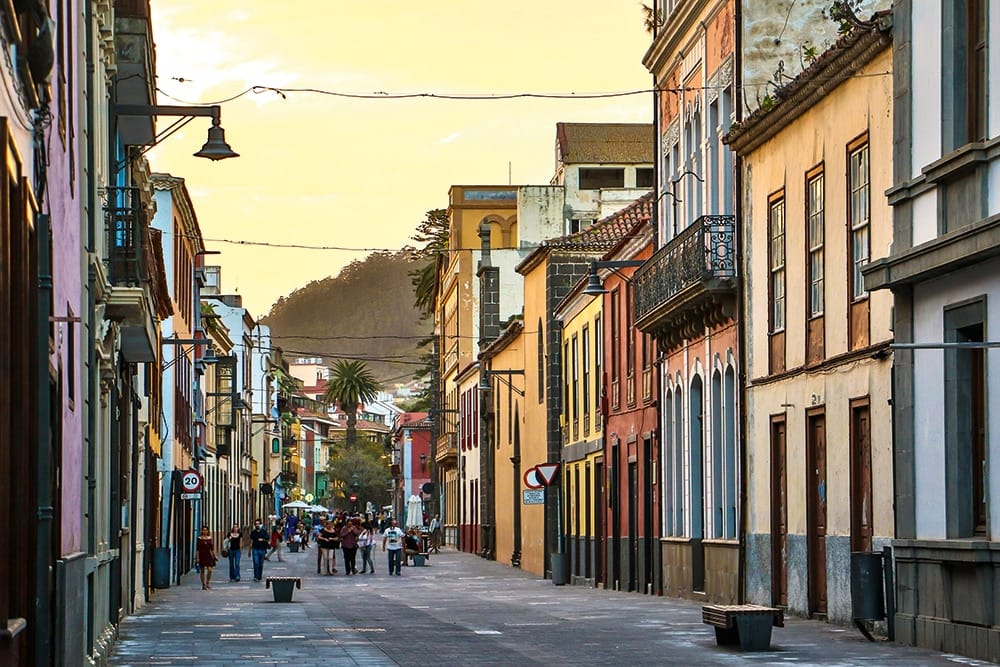
San Cristóbal de La Laguna, Cultural Heritage
The mix of old and new, the famous university life that makes the city shine, the emblematic monuments camouflaged among cultural buildings and historic squares that only give prestige to its name...
These are some of the countless secrets hidden in the old capital of Tenerife, San Cristóbal de La Laguna.
Today, we will walk through its narrow streets to help you enter the tiny willows of a place that leaves nothing to be desired, whose history is reflected in the different corners that have accompanied us since the 15th century, as well as in the most recent ones worthy of the 21st century.
History of San Cristóbal de La Laguna
Founded in 1497 by Alonso Fernández de Lugo.La Laguna became the capital of the island of Tenerife thanks to its inland location, which isolated it from pirate attacks.
Your toponymy was provided by the lagoon next to the city, which soon dried up until it extended into what is known today as the Vega Lagunera.
Starting from La Plaza del Adelantado, the city began to develop its urban characteristics with perpendicular streets, typical of today's modern cities, mixed with narrower streets, characteristic of ancient medieval cities.
This modern city feature The city, which was already characteristic of the late 16th century, was taken as an example for the development of new cities in North and South America, which is why, UNESCO decided to declare it a World Heritage Site.
Over the years, La Laguna became less and less important as a result of the increasingly prosperous urbanisation of the neighbouring city of Santa Cruz. It lost the island's capital under Ferdinand VII.
Subsequently, in 1927, an event took place that was to prevent the rest of the municipalities from being able to compete with it despite its growing development: it was constituted in it. the first university in the Canary Islands.
Currently, La Laguna is probably the favourite city for leisure within the metropolitan area. Its narrow streets for strolling, its wide squares for children to spend hours playing and for adults to sit on a bench and let time go by, the variety of cafes, bars and restaurants that can make anyone dizzy, the eternal nightlife.
La Laguna will no longer be the capital of Tenerife, but its position as the one of the main destinations of the north of the island is still intact.
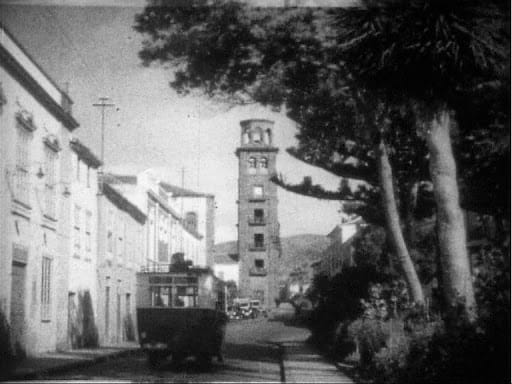
What to visit in San Cristóbal de La Laguna
PLAZA DEL ADELANTADO (SQUARE OF THE ADELANTADO)
The development of this city began to spread from the Plaza del Adelantado, making it the ideal place to start the route.
Alonso Fernández de Lugo decided to build his second home. in this square, and although it has gone through different names, histories and hypotheses, it is still known today as the Adelantado.
This place is surrounded by emblematic, public and historic buildings such as the Town Hall, the Courts and the Hermitage of San Miguel, as well as the Convent of Santa Catalina, whose balcony takes centre stage as it is the perfect place to see without being seen. In addition, the centre of the square is adorned with a marble fountain from Marseilles.
The different historical sources record the history of this place. In them, it can be seen how the original layout of the streets and the limits that define it, have remained almost intact over the years.

CALLE HERRADORES
We moved to Calle Herradores, one of the most attractive of La Laguna and which also starts at the Plaza del Adelantado.
The importance of mentioning it on this route is due to the fact that, as soon as we leave the square, we can appreciate the most outstanding stately homes The city's main streets, which were once inhabited by merchants and nobles, are located in the city centre.
These include the Casa del Corregidorresidence of the civil governor, the Casa de la Alhóndigathe prison and barracks of the Guardia Civil, and the Alvarado Brahacamonte HouseThe façade is painted in a bright yellow colour.
From the latter, you can access the Tourist Office of La LagunaThis is an ideal visit if you want to gather information or sign up for one of the guided tours they offer.
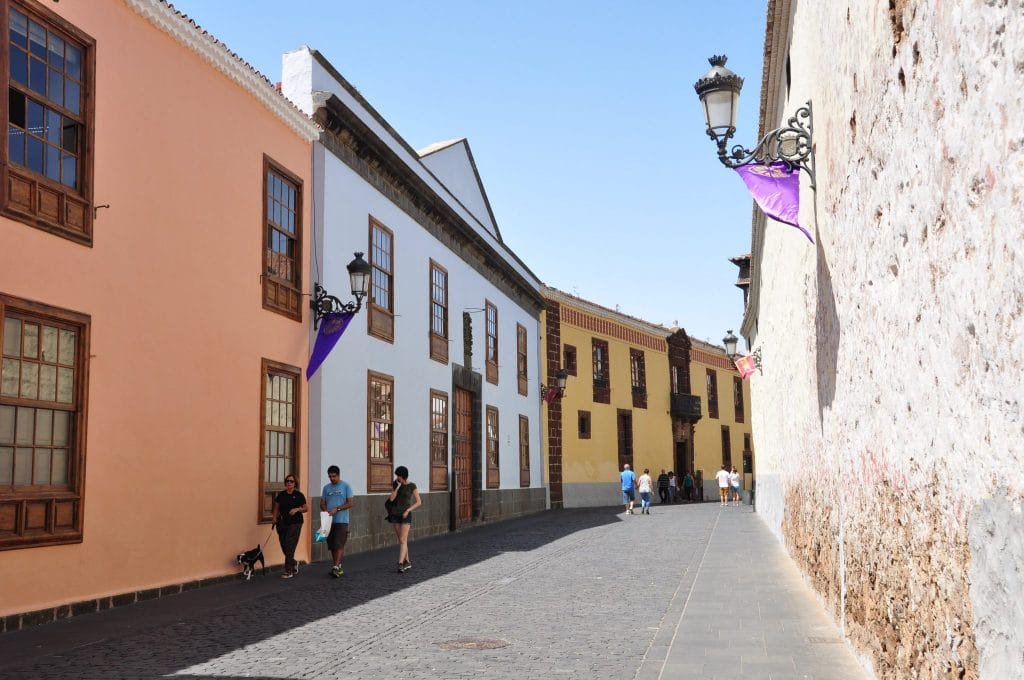
SAINT AUGUSTINE STREET
One of the advantages of La Laguna is that, walking with or without directionYou'll end up on a pedestrian street that will leave you spellbound by all it has to offer.
In this case, we turn towards Calle San Agustín, which, in the opinion of many, is one of the most beautiful and impressive of the whole city.
This street is also home to several stately homesSome of them have already become museums or the headquarters of different bodies in La Laguna.
Among them, the following stand out in particular the Salazar HouseThe building is in the Canarian Baroque style and was the residence of the family that gave it its name.
This place went from function to function, from a landmark house, to a casino, to nowadays the Episcopal residence.
Its gates are open to visitors, and as soon as we cross them, we can see a simple courtyard with a fountain, which leads to another courtyard full of flowers and tropical plants.
Here, you will be able to appreciate one of the canarian balconies most beautiful in the city.
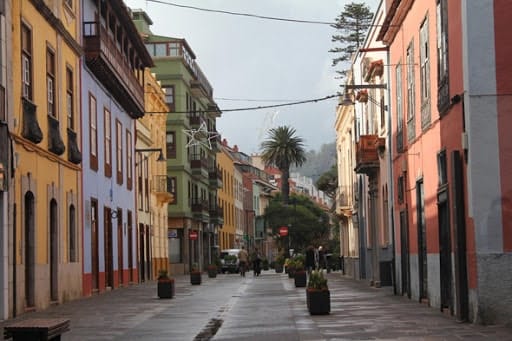
MUSEUM OF HISTORY AND ANTHROPOLOGY OF TENERIFE
Just a few steps away from the Episcopal Palaceand in the same Calle San Agustín, we find ourselves with this museum which occupies the Lercaro House and the Saavedra House.
Even though the courtyards and staircases have been restored, this place gives us the perfect opportunity to glimpse the interior of a Canarian Renaissance house thanks to the fact that it still retains its structure and many original elements.

CHURCH OF NUESTRA SEÑORA DE LOS DOLORES
Another more of the story which enriches Calle San Agustín.
It is the church descending from the first hospital that the town of the same name once had, and is very easy to spot thanks to the yellow colour of its walls, and the iconic carved doorway that leads to the Church.
Currently, the hospital's part of the hospital is now the Adrián Alemán Municipal Libraryand both (the church and the hospital), were declared Bien de Interés Cultural por el Gobierno de Canarias (Property of Cultural Interest by the Canary Islands Government)..

Which plan to follow on your holidays?
Don't miss the Experience World Heritage: guided tour of La Laguna and tapas tasting
Are you passionate about the history and culture of the Canary Islands? We propose the perfect author's trail to get to know the only city in the Canary Islands declared a World Heritage Site.
If you want to live a unique experience and respectful with the environment, and also discover La Laguna combining its jewels: its heritage, its culture, its architecture and its gastronomy. guided tour of the historic centre of La Laguna
ST. CHRISTOPHER'S CATHEDRAL
This Holy Church has its origins in the 16th century, but it was not until 1819 that it became a Cathedral.
The aspect that we can see today is given by the reconstruction which was built in the 20th century, being the only element that remains from the primitive factory. its grand neoclassical façade.
It was declared as Bien de Interés Cultural in 1983The interior of the church shows off the neo-Gothic style through its ribbed vaults. It has major works such as the Baroque altarpiece of the Virgen de los Remedios or the monumental pulpit made of Italian marble, without forgetting the wealth of heritage and art in its great Treasury room.
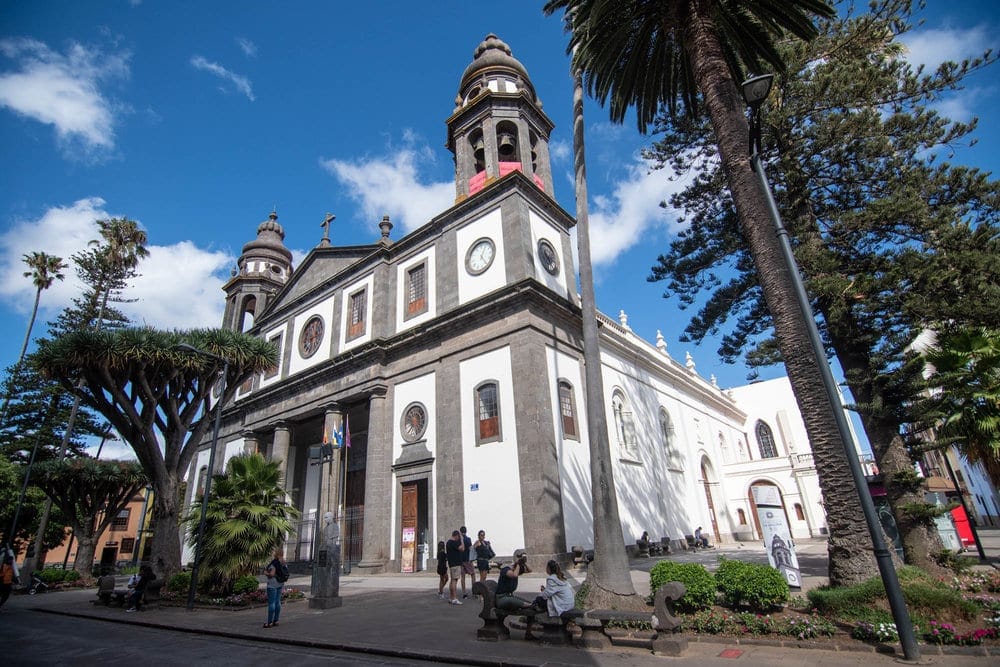
CHURCH OF NUESTRA SEÑORA DE LA CONCEPCIÓN
The Church of Nuestra Señora de la Concepción is the matrix of all the cathedrals built from the 16th century onwards.
In 1948, the site was declared a National Historic-Artistic Monument thanks to its characteristic layout of the Canarian temples, with three naves and semicircular arches. However, the deterioration of time took its toll on this place, causing the collapse of several of its naves, and it was not until the end of the 19th century that it was rebuilt until 1974.
Today, it has become the most representative symbol of La Laguna. The church has a rich artistic heritage. In addition, the pulpit, a Baroque piece carved in wood at the end of the 18th century, stands out and is considered to be an unsurpassable jewel of its kind.
The story goes that it was brought by the first Adelantado to baptise the first Guanches of Tenerife, and it is believed that, when the construction of La Laguna began in this area, the Adelantado's first home was the yellow house just behind the church.
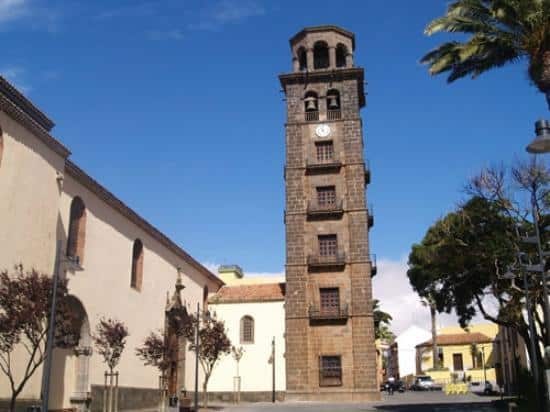
THE LEAL THEATRE
Characterised by its purely eclectic styleThe façade is particularly notable for its profusion of floral elements, animals and characters made by López Ruiz.
The interior of the Leal Theatre The conference is enough to talk about for a whole lunch. At 1917The artistic ornaments that decorate the upper gallery were made, as well as the four decorative motifs that correspond to the entrance doors of the place.
At 1931 The most visually impressive of these is on the first floor, where the cushions are open to the public, and where the main entrance is located.inco round arched doors.
This represents a significant modification with respect to the main project, with the three most important ones in the central body of the building, and the other two on the sides.
The peculiarity of the theatre's internal and external design has ensured that it has been used in various shows, as well as the well-deserved recognition it has earned for its role as the venue for the first film screenings carried out in La Laguna.
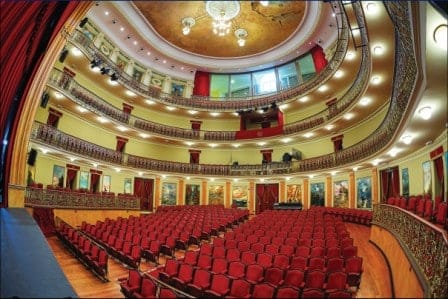
THE CHRIST'S SQUARE
One end of the historic city centre that served as the boundary between the urban and rural parts of the municipality.
It is also known as Plaza de San Francisco due to the existence of the convent of the same name in 1506, but it is commonly known as the Plaza del Cristo thanks to the important presence in one of its corners of the Real Santuario del Cristo de La Laguna.
This square underwent a series of reforms throughout its existence. In the 19th century, it had a central shrine and a series of black poplars as its only decoration, which were replaced in 1922 by another shrine due to deterioration.
In 1935, another reinforced concrete temple was started to commemorate the Santo Cristo during the September festivities, which coexisted for some years with its predecessor.
In 1962, at the hands of a project of the engineer Carlos Días LópezA luminous fountain was installed for public lighting, made of artificial stone, and shortly afterwards, in 1998, an underground car park was built, the fountain was removed and the area was resurfaced with Catalan flagstones.
As we can see, the Plaza del Cristo has a history of its own that few areas of La Laguna can empathise with, which is why is a must-see for anyone strolling through the streets of the city.
Moreover, being away from the hustle and bustle of the historic centre will give you the opportunity to breathe much more peace and quiet away from the crowded main streets and passers-by.
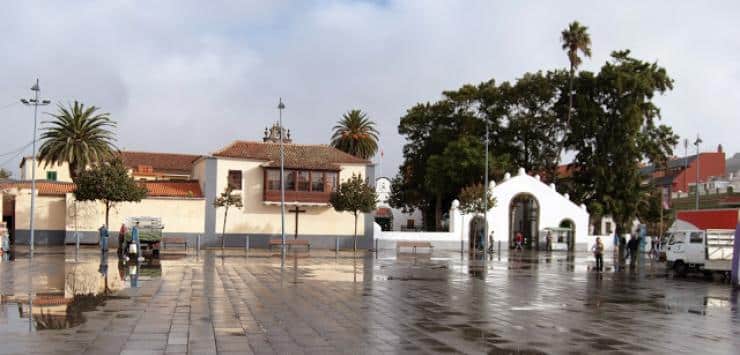
LOCAL GUACHINCHES AND RESTAURANTS TO EAT AT THE LAGOON
Either if you visit La Laguna as a place of passage, or if you plan to spend your time wandering the streets aimlessly during your trip, you can take the opportunity to spend a couple of hours more in one of the restaurants, cafés or bars this historic city has to offer.
That's why here's a short list of places we recommend where you can decide whether your preference is for local cuisine, to play it safe in one of the restaurants or to have a snack before you leave.
Tasca La Venta de La Esquina
Ten minutes from Avenida Trinidad, this bar/restaurant will please your palate with its homemade food like few other places have.

Headless horseman
Located in the best gastronomic street of La Laguna, the Headless Horseman is your best option if you are looking for a casual place, which in addition to the usual delicious and exquisite dishes, also offers vegetarian, vegan and gluten-free options.

La Tasca de Cristian
Another place that can go unnoticed if you are not attentive to your surroundings. However, once you try the dishes this restaurant has to offer, you'll stop passing by and come back again and again.

World Café
A carrot cake to die for, accompanied by a vintage atmosphere thanks to the unique décor and charming, spacious patio of this café. With a variety of cakes to tempt you, and a menu specialising in Argentinian dishes, this place knows how to make a place for itself in our minds so that we have no choice but to repeat the visit.

Coffee 7
Another charming café that is especially popular with students. The long corridor at the entrance leads to a small bar with tables and a comfortable armchair, plus it has an even more spacious patio with different seating areas for you to choose from. It is above all a perfect place for a coffee and a chocolate dessert, but the tasting dishes on offer are not to be missed.

We know that the unique peculiarities of a city like La Laguna will leave their own mark on you, but here, we leave you with nine spectacular spaces that we believe will help you to live the full experience of a city as important as this one.
After all, its history, its streets, its houses and buildings, as well as its people, are the reason why it is considered the most important place in the world. World Heritage.
Do you want to enjoy more amazing places in Tenerife?
If you come to visit Tenerifeyou will be more interested in spectacular locations to see around this Canary Island:
- What to see in La Villa de La Orotava
- What to see in Candelaria
- What to see in Puerto de La Cruz
- What to see in Icod de Los Vinos
- Seafaring village


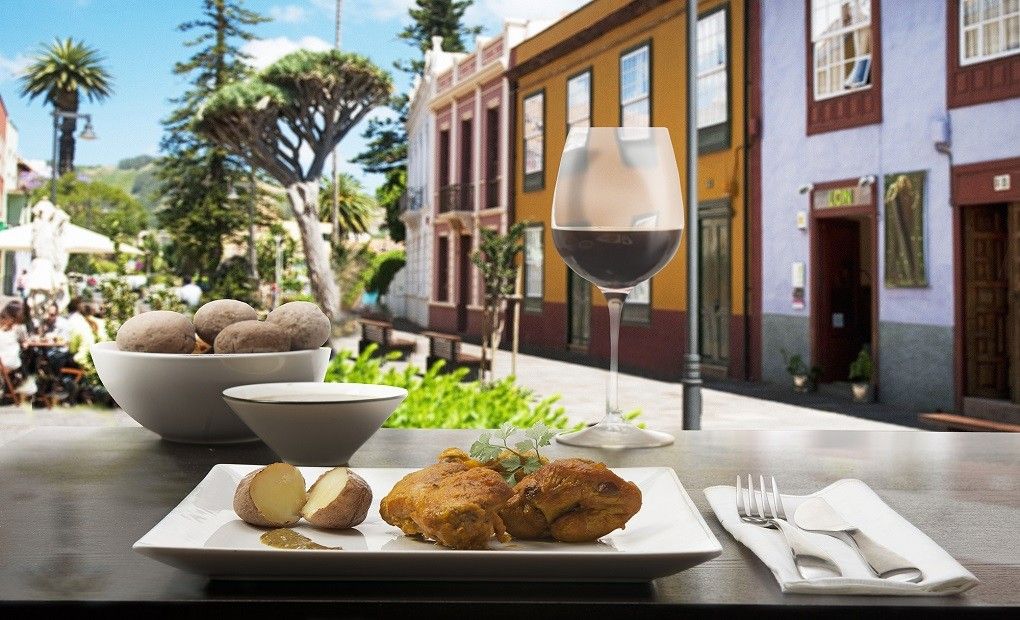
Add comment